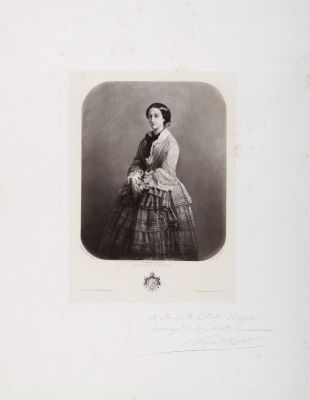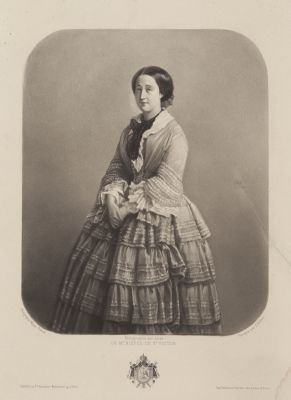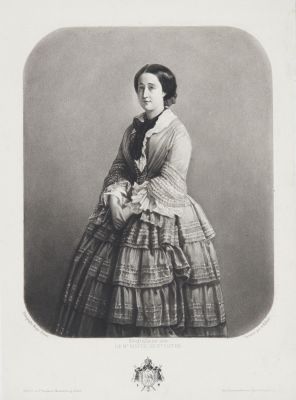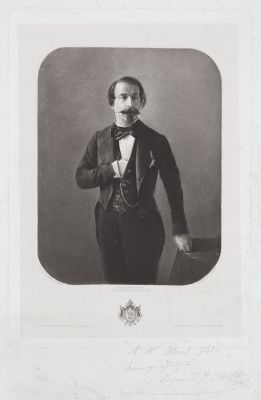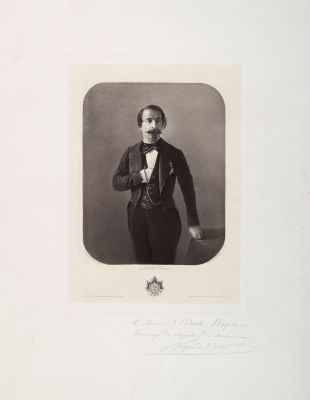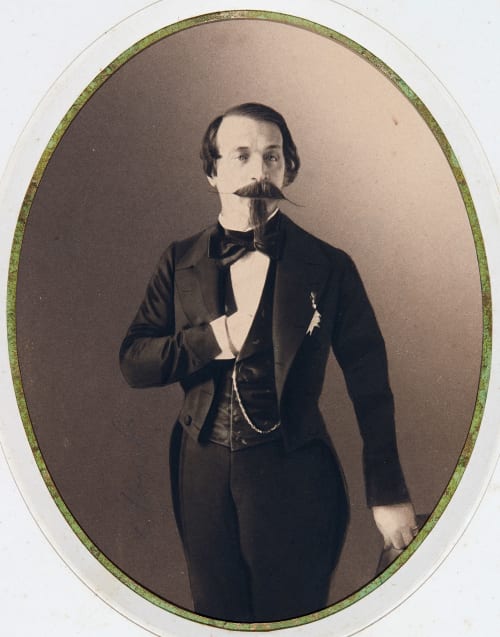
Title
Napoleon IIIArtist
Mayer Frères (French, 1805-1870)Date
1853Process
Salt PrintImage Size
18.5 x 14.3 cm
M. Niepce will place in the hands of His Majesty a glorious testimony of his gratitude. It is a magnificent portrait of Napoleon Ill, photographically engraved on steel, by means of a negative by MM. Mayer brothers, for whom the Emperor has deigned to pose.1
Leopold Ernest Mayer and his brother Louis Frederic started a daguerreotype studio in Paris about 1841-2. In February 1850 they established a joint firm under the name ‘Mayer freres’ at the Rue Vivienne, close to the Boulevard Montmartre, where they took daguerreotype and calotype portraits, the latter under the euphemistic title ‘daguerreotypie sur papier’. In May 1853 they took a portrait of Napoleon III which earned them the suffix ‘Photographers of his Majesty the Emperor’. Their association in November of the following year with Pierre Louis Pierson, a daguerreotypist who began work about 1844 and who had a studio in the Rue de Richelieu, led to the firm’s new title ‘Mayer et Pierson’. [2]
On 11 December 1848, Louis-Napoleon Bonaparte was elected (the first, and only) President of the Second Republic, by universal male suffrage. It was from the Elysée-National that the future Emperor prepared the coup d’etat of 2 December 1851. The dissolution of the Assembly and the announcement of a new constitution were the first steps towards the re-establishment of the Imperial regime which would happen a year later.
With an economic and political environment favorable to artistic development combined with an increase in the market for public and private images, the second half of the 19th Century would see a revolution in the use of photography. Louis-Napoleon Bonaparte, the Emperor of France was sensitive to the development of industrial and artistic techniques, and did not miss the opportunity to use photography as a means of propaganda, political as well as dynastic: whether it be portraits of the imperial couple, or of the heir, the Prince Impérial, photographic documentation about heritage, Imperial voyages, or albums of portraits of dignitaries.
In 1854 Niépce de Saint-Victor presented to Emperor Napoleon III a sample of his heliogravure process. It is no wonder that this portrait was the image chosen for the demonstration.
Reproduced / Exhibited
Jammes, André, De Nieìpce AÌ Stieglitz: La Photographie En Taille-Douce : [exposition], 19 Novembre 1982-20 Feìvrier 1983, Museìe De L’elyseìe, Lausanne. Lausanne: Le Museìe, 1982 no. 28
De Andere Fotografie de Geschiedenis van de Fotomechanische Reproductie in de Negentiende Eeuw: tentoonstelling in het Zeeuws Museum Middelburg 1989 (The Other Photography the History of Photomechanical Reproduction in the Nineteenth Century: Exhibition in the Zeeuws Museum Middelburg 1989) Exhibited chk. 21
McCauley, Elizabeth Anne, AAE Disdéri and the business card portrait photograph, New Haven: Yale University Press, 1985.
References
[1] Cosmos : revue encyclopédique hebdomadaire des progrès des sciences et de leurs applications aux arts et à l’industrie, Bureaux du Cosmos, Paris, 1852 p. 274
[2] Gernsheim, Helmut. The Rise of Photography, 1850-1880: The Age of Collodion. London: Thames and Hudson, 1989.

